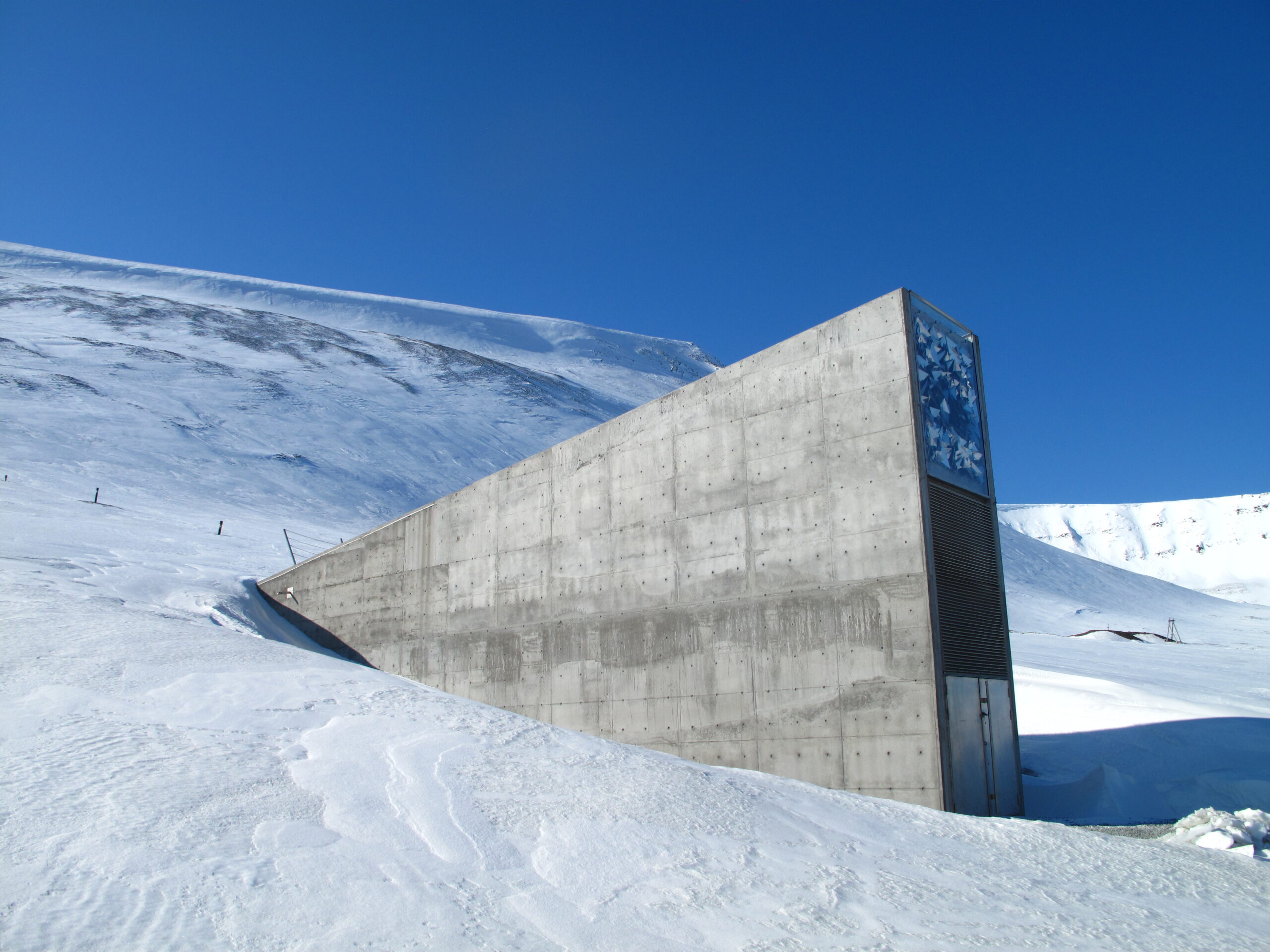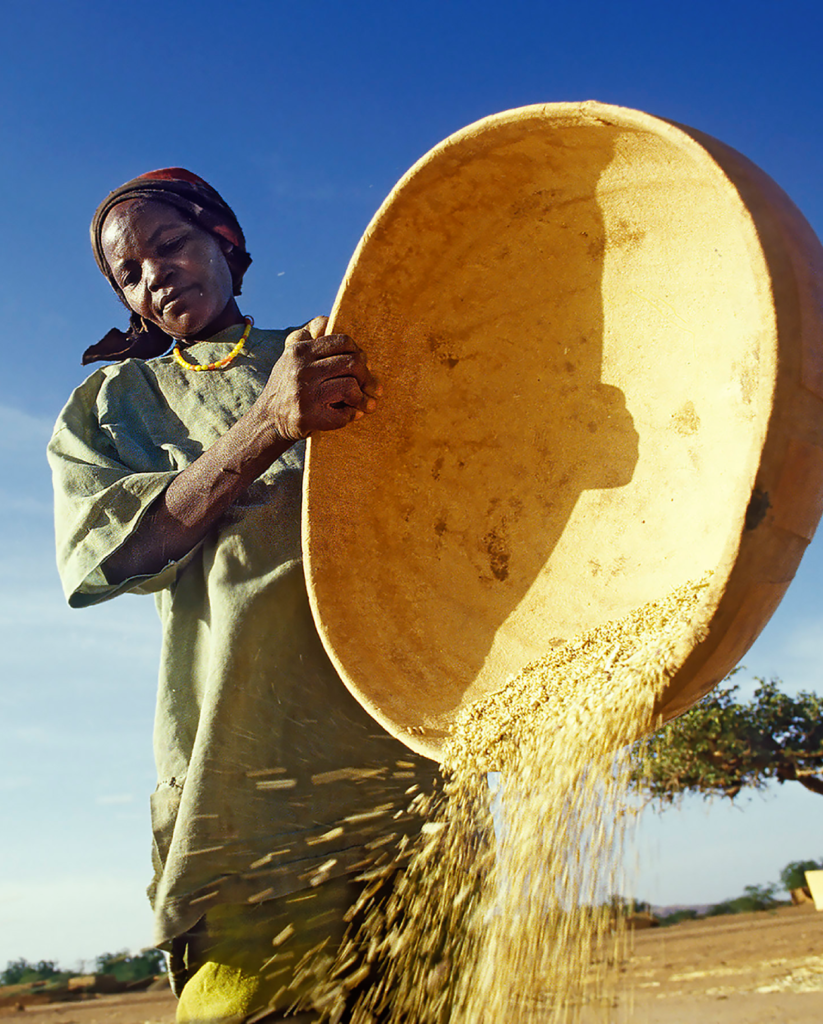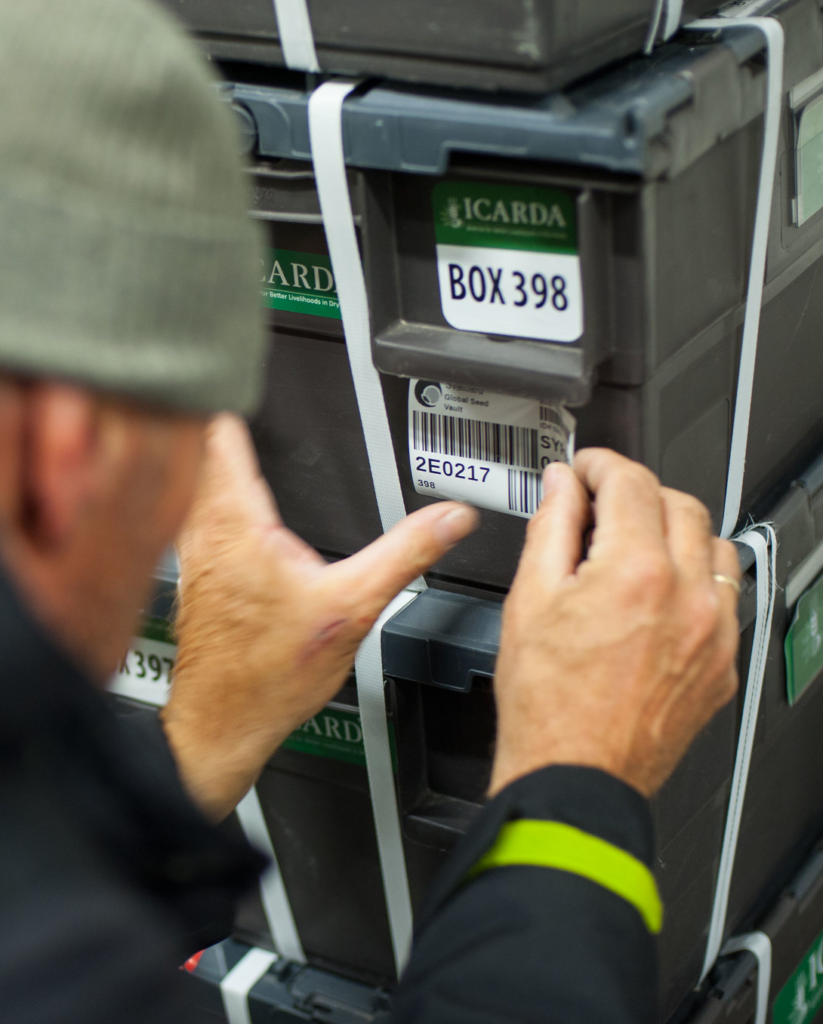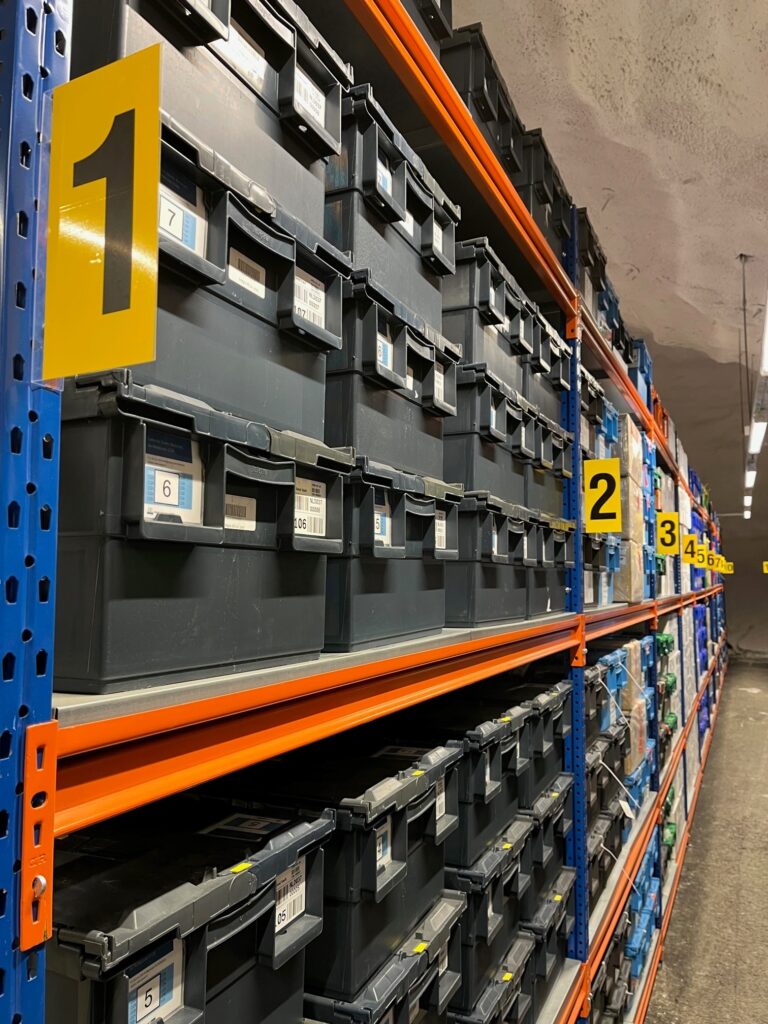
Purpose, operations and organisation
Our Purpose
We offer safe, free and long-term storage of seed duplicates from all genebanks and nations participating in the global community’s joint effort to ensure the world’s future food supply. The facility serves a humanitarian purpose and is part of the international system for conserving plant genetic diversity guided by the UN organisation for Food and Agriculturen (FAO). While there may be a role for the Seed Vault in the event of a global catastrophe, its value is considered to lie much more in providing back-up to individual collections in the event that the original samples, and their duplicates in conventional genebanks, are lost due to natural disasters, human conflict, changing policies, mismanagement, or any other circumstances.
Crop diversity is the foundation of our food production. It allows our food crops to adapt to the climate and population changes that are coming. The United Nations predicts the globalpopulation will increase from the 2020 population of 7.8 billion to 9.7 billion by 2050. Changing weather patterns cause changes in growing seasons and the environment, impacting the ability of today’s agricultural crops to thrive or even to survive.
The seeds contain the raw material that scientists and plant breeders might need to improve the yield, resilience or disease resistance of the agricultural varieties that farmers plant. The world’s gene banks are the first line of resistance to the external problems that agriculture faces.
The Svalbard Global Seed Vault, function as safety depository for orthodox seeds, primarily of domesticated plants and their wild relatives that are important to food and agriculture.
Svalbard is the Norwegian archipelago half way between the Norhern pole and Mainland Norway. This location are in many ways a perfect location for the worlds seed backup. Norway is a quiet and safe corner at the top of the world, and a long distance from the seed vaults housing the original collections, which are mostly located in the Sothern regions. Even though Svalbard is affected by global warming, it is still expected to remain one of world’s coldest places. The seeds are placed in the chambers inside the frozen mountain and artifical cooling plants are keep the temperatures at a constant minus 18C. The permafrost in the mountains surrounding the Seed Vault is certain to keep the seeds cold for a long time, even in the event of no artificial cooling.
In accordance with the most appropriate techniques…
With a view to preparing the Seed Vault for a wetter and warmer climate in the future, Norway has taken precautionary measures and carried out a major upgrade of the facility from 2016 to 2019. The Seed Vault’s entrance tunnel was made waterproof which, together with the installation of a more efficient and environmentally friendly cooling system, has made the Seed Vault well prepared in the face of future climate change. We will continue to monitor the Seed Vault and follow the developments in the climatic and natural conditions on Svalbard. It is good to know that Norway remains prepared to take any steps necessary to secure the seeds, even in the face of new situations in the future.
 Photo: Pål Hermansen
Photo: Pål Hermansen
Our Operations
All gene banks holding sustainable seed collections are invited to deposit duplicates of their seeds in the Svalbard Global Seed Vault.
The deposits are made in accordance with the depositor agreement between the depositing institution and the Norwegian Ministry of Agriculture and Food. Seeds are deposited free of charge, under so called “black box conditions”. This means that any seed boxes and containers stored in the Seed Vault will not be opened. The seeds are indisputably owned by the depositing gene bank, and only that gene bank can request return of seeds stored in the Seed Vault.
Operation management
The Nordic Genetic Resources Centre (NordGen) manages the Svalbard Global Seed Vault. In this role, it liaises with the gene banks that wish to take advantage of the long-term secure conservation that the Seed Vault offers their seed collections, and advises on the required steps for depositing those seeds. This includes approving the material to be deposited, establishing the timetable and process for the deposit, providing guidance for the appropriate packaging, labelling and documentation of the material to be deposited, and facilitating shipment of seeds to Svalbard and the shipment’s subsequent signing in to the Seed Vault.
Shipping and security
Seeds are usually shipped to Svalbard by air freight, although sea transport can be used for larger shipments. Depositors ship seeds to coincide with pre-announced Seed Vault opening dates. Once the air shipments arrive at Oslo Airport, NordGen’s logistics partner, Jetpak, handles the shipment’s final transport to the town of Longyearbyen, where the Seed Vault is located. For security, all seed boxes are scanned to ensure that no items other than seed pouches enter the Seed Vault. The Seed Vault receives seeds three times a year, although it can set up special openings when situations call for it.
Packaging
The dried seeds destined for storage in the Seed Vault are packed in specially designed airtight aluminum pouches. For shipment to Svalbard and for storage in the Seed Vault, the pouches are packed in standard 60x40x28 cm boxes, appropriate for the Seed Vault’s shelves. The boxes are made of plastic, wallboard or wood, and numbered and labeled with names of depositors as well as their shelf position. All the information is uploaded to the Seed Portal, which is the NordGen-managed database.
Facility management
Statsbygg, the public sector administration enterprise responsible for government buildings, has a permanent office in Svalbard. It has established surveillance and monitoring systems with which it continuously oversees the Seed Vault facility, making sure that the seeds are kept safe, dry and cold at a stable temperature of minus 18°C.
Seed monitoring
Monitoring of seed viability and regeneration schedules remain the responsibility of the depositor. This is feasible because the seeds deposited in the Seed Vault originated from the same lots as regular gene bank stock which can be monitored by the gene bank. Thus, because the storing conditions in Svalbard are equal to or better than storage conditions in most gene banks, the results of gene bank monitoring will mirror the conditions that would be found in the seeds stored in the Seed Vault.
Svalbard is the Norwegian archipelago half way between the Norhern pole and Mainland Norway. This location are in many ways a perfect location for the worlds seed backup. Norway is a quiet and safe corner at the top of the world, and a long distance from the seed vaults housing the original collections, which are mostly located in the Sothern regions. Even though Svalbard is affected by global warming, it is still expected to remain one of world’s coldest places. The seeds are placed in the chambers inside the frozen mountain and artifical cooling plants are keep the temperatures at a constant minus 18C. The permafrost in the mountains surrounding the Seed Vault is certain to keep the seeds cold for a long time, even in the event of no artificial cooling.
In accordance with the most appropriate techniques…
With a view to preparing the Seed Vault for a wetter and warmer climate in the future, Norway has taken precautionary measures and carried out a major upgrade of the facility from 2016 to 2019. The Seed Vault’s entrance tunnel was made waterproof which, together with the installation of a more efficient and environmentally friendly cooling system, has made the Seed Vault well prepared in the face of future climate change. We will continue to monitor the Seed Vault and follow the developments in the climatic and natural conditions on Svalbard. It is good to know that Norway remains prepared to take any steps necessary to secure the seeds, even in the face of new situations in the future.


The Organisation
The Government of Norway established and fully funded the Svalbard Global Seed Vault.
The overall responsibility for the Seed Vault rests with the government, under the Norwegian Ministry of Agriculture and Food. Daily operations are overseen by the Nordic Genetic Resource Centre (NordGen) under an agreement between the Ministry, NordGen and the Crop Trust (formerly the Global Crop Diversity Trust) which partly provide funding for the Seed Vault’s management.
In addition, the management is overseen by an International Advisory Panel, representing depositing gene banks and stakeholders, that meets regularly for consultations.
Norwegian Ministry of Agriculture and Food administers the Svalbard Global Seed Vault. It funds the operations and management of the facility through Statsbygg, the government institution responsible for state-owned buildings. The Governor of Svalbard is the government’s representative and has overall responsibility for the Seed Vault in Svalbard.
NordGen is responsible for the management of the Seed Vault, including seed operations and liaising with gene banks about options for conserving seeds, preparing documents, facilitating seed shipments, and receiving seeds into the Seed Vault and documenting them. Seed reception normally takes place three times a year, at regularly scheduled and pre-announced Seed Vault openings, or on occasions organised to meet unforeseen scheduling requirements.
Crop Trust was an important partner in the establishment of the Seed Vault and provides considerable funding for operations costs, as part of its funding scheme for the global genetic resource conservation system. The Crop Trust also assists countries and institutions by covering costs and providing technical advice for packing and shipping seeds to Svalbard.




